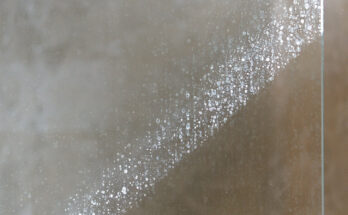The Creative Tile Pattern You’ve Never Thought About Using In Your Kitchen
When designing a kitchen to make it feel both unique and timeless, you can never go wrong with tiles. Aside from having countless shapes, sizes, and design options, they are one of the most versatile materials for a remodel or a simple upgrade. From herringbone patterns to mosaics and even the traditional subway tile look that celebrity interior designer Joanna Gaines likes to use in any room, there are plenty of styling options out there. However, one lesser-known style that’s both nostalgic and modern is slowly gaining attention for a good reason. The gingham tile pattern, inspired by the checked fabric of picnic blankets and vintage tablecloths, can give any kitchen a touch of old-school beauty with a fresh twist.
Interior designer-turned-businesswoman Leigha Stepp Tingle tried this tile pattern for one of her physical stores, and the result was stunning. Using three colors — white, gray, and light blue — she styled the front of a store counter in gingham fashion to make it stand out from the rest of the room. The complementary shades added depth and dimension to the surface, while the structured, geometric design gave it a subtly playful vibe that matched the nature of her business, selling quilted bags. Although the gingham pattern is not among the tile trends dominating in 2025, it can bring a unique charm to any room, especially the kitchen. When used as a backsplash or a feature wall, it can evoke an “old country” aesthetic that feels cozy, comforting, and grounded without being outdated.
How to bring gingham tile into your own kitchen
Incorporating the gingham tile pattern into your kitchen space is actually easier than you think. The key is starting the project right by planning things carefully. Since gingham relies on symmetry and repetition, you need to visualize it as part of the layout of your kitchen first. Get started with a home design vision board by sketching the pattern or using design apps to digitally lay out where you want to put it. If you are hiring a contractor for the project, be sure to thoroughly explain your vision for the space, since a large repeating pattern, when not done right, can ruin the entire aesthetic of any room.
Another design aspect you should prioritize before getting your hands dirty is choosing the color palette. Select two or three colors that will complement your existing kitchen elements and appliances. Neutral or earthy shades will go well with a classic country-style kitchen. Think soft grays, ivory whites, and warm taupes. If you want something bold for your space, mix white with different hues of brighter colors like terracotta, green, and blue. The contrast in the colors will form the signature gingham pattern without making the entire space look too busy. Using small tiles will create a grid-like appearance, while bigger tiles will yield a more pronounced gingham effect.
If you are doing the project on your own, consider pre-made gingham mosaic tiles that are easier to install. If you are renting, peel-and-stick gingham wallpaper offers an easy-to-install and remove solution.



